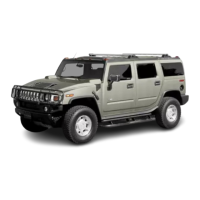Operation Tips
•
Keep the hood and front air inlets free of ice,
snow, or any other obstruction (such as
leaves). The heater and defroster will work far
better, reducing the chance of fogging the
inside of your windows.
• Keep the air path under the front seats clear
of objects. This helps air to circulate
throughout your vehicle.
• Adding outside equipment to the front of your
vehicle, such as hood-air deflectors, etc.,
may affect the performance of the heating and
air conditioning system. Check with your
dealer before adding equipment to the outside
of your vehicle.
Warning Lights, Gages, and
Indicators
This part describes the warning lights and gages
on your vehicle. The pictures will help you
locate them.
Warning lights and gages can signal that
something is wrong before it becomes serious
enough to cause an expensive repair or
replacement. Paying attention to your warning
lights and gages could also save you or others
from injury.
Warning lights come on when there may be or
is a problem with one of your vehicle’s functions.
As you will see in the details on the next few
pages, some warning lights come on briefly when
you start the engine just to let you know they
are working. If you are familiar with this section,
you should not be alarmed when this happens.
Gages can indicate when there may be or is a
problem with one of your vehicle’s functions. Often
gages and warning lights work together to let you
know when there is a problem with your vehicle.
When one of the warning lights comes on and
stays on when you are driving, or when one of the
gages shows there may be a problem, check
the section that tells you what to do about
it. Please follow this manual’s advice. Waiting to
do repairs can be costly – and even dangerous. So
please get to know your warning lights and
gages. They are a big help.
Your vehicle also has a Driver Information
Center (DIC) that works along with warning lights
and gages. See DIC Warnings and Messages
on page 226.
204

